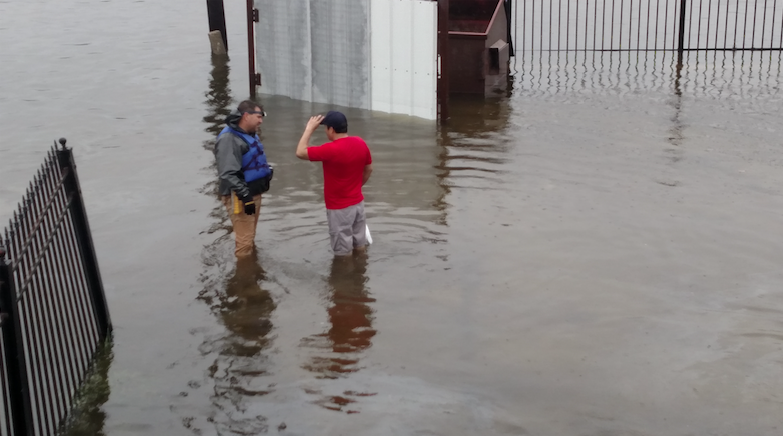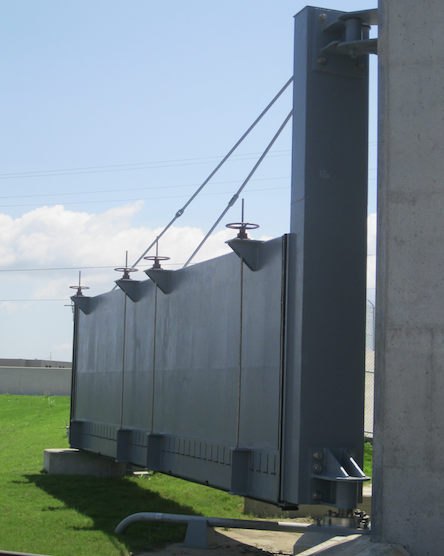Several months after Hurricane Harvey’s destructive floods that affected thousands of houses in Southeast Texas, and the widespread flooding Hurricane Harvey unleashed last year, the Houston City Council has approved new floodplain regulations on April 4, 2018.
These regulations were initially brought forward by Mayor Sylvester Turner in January. A narrow vote and a contentious debate followed in the City Council over how to take better preventative steps against storms. The result? A new regulation: From this fall onward, all new houses built in Houston’s floodplain have to be elevated to a high level off the ground.
The unusually close 9–7 vote was preceded by over three hours of extremely heated debate. The overall objective of the proposed regulations is to reduce the risk of floods and the consequent damage caused in the future. The regulations touch upon many building codes that pertain to the floodplain.
The existing regulations apply only within the 100-year floodplain and require that all structures be built 1 foot over the flood level in a less severe 100-year storm. They only apply to buildings that are predicted to be at a 1% chance of being flooded in any given year. The new regulations are the first time the city is imposing minimum elevation requirements within the 500-year floodplain.

The vote takes a turn away from Houston’s consistent aversion to limiting development. Meaning that Houston is changing the 500-year flood plain and along with FEMA are raising the freeboard over X zone by an additional 2 feet. Now all new construction in Houston’s floodplains will be devised 2 feet over the predicted water level in a 500-year storm. To take the requirements even further mortgage companies and insurance companies are requiring an even higher X zone before underwriting mortgages of insuring properties.
The move came with a significant amount of resistance involved. Almost half of the council members had already expressed opposition to the propositions prior to the meeting. This led to a fierce and heated debate in the meeting room. The opposition to the move believed that the proposed requirements should be relaxed in the 500 year flood plain. The opposition believed that people who lived in areas that never flooded were being overcompensated.
The people in favor of the move argued that forward-leaning steps had to be taken in the aftermath of the devastating Hurricane Harvey. They stated that Houston had to shape policies that ensured the citizens’ safety in all kinds of hazards.
“When you are asking for new construction to be built higher where we’re no longer guided by the 100-year floodplain, but guided by the 500-year, and building plus 2, of course, that’s going to generate a lot of conversation, as it should,” Mayor Turner said following the announcement.
The new regulations are set to take effect from the 1st of September 2018 and will be enforced on all structures that lie within the next 500-year floodplain. This floodplain is at a 0.2% chance of being flooded in any given year. Any addition to the existing structure of a building that is larger than one third of the structure’s initial footprint also has to follow the rules and be elevated.
“This is a defining moment,” stated Mayor Sylvester Turner in his last pitch to the council. “Can we undo what was done with Harvey? No. But can we build looking forward? Yes. Does it mean it may cost more financially? Yes. But if it has the probability of saving lives, and if it has the probability of letting people know in our city and those who are looking to come to our city that we are taking measures to be stronger, to be more resilient, then that’s positive for the city of Houston.”

The new regulations come in anticipation of the new and updated data as well as the FEMA flood insurance rate maps. The data looks at the annual rainfall estimate in the region and is slated to publish next year.
The council members in opposition to the move believe that the issue has to be studied in depth before passing the regulations.
“We’ve only looked at 5,000 houses,” Houston District G City Councilman Greg Travis said. “Not enough data. Not enough information. I think we’re definitely overreaching at a great cost.”
Jack Christie, a Council Member, believed that the new regulations will coerce homeowners with no record of flooding to comply with the regulations and elevate their structures. Many council members also argued that the updated floodplain maps are yet to be published and the new regulations are just simply jumping the gun. Many also argued that the move to include the 500-year floodplain was misguided. In fact, a report published in 2017 by property information company CoreLogic concluded that over half of Houston’s moderate to high-risk homes for flooding are not required to have flood insurance as they happen to be situated out of FEMA designated flood zones.

The decision to include the 500-year floodplain, where there is only supposed to be a 0.2% risk of flood on any given year, comes after the floodplain was struck by floods for three years consecutively. It has been estimated that more than 80% of the buildings in the 500-year floodplain and the 100-year floodplain during Hurricane Harvey could have been able to avoid damage had the regulations been enforced earlier. The managing engineer of Houston’s floodplain management system, Jamila Johnson, stayed that the cost that will be utilized to enforce the regulations and elevate the buildings will be more than compensated for after just the occurrence of one flood.
Within the year the mayor’s office plans to require builders to provide more stormwater detention, redevelop large parcels of land and make other significant changes in the system. They also intend to propose and enforce the new regulations on the newer buildings that are situated away from the floodplains.